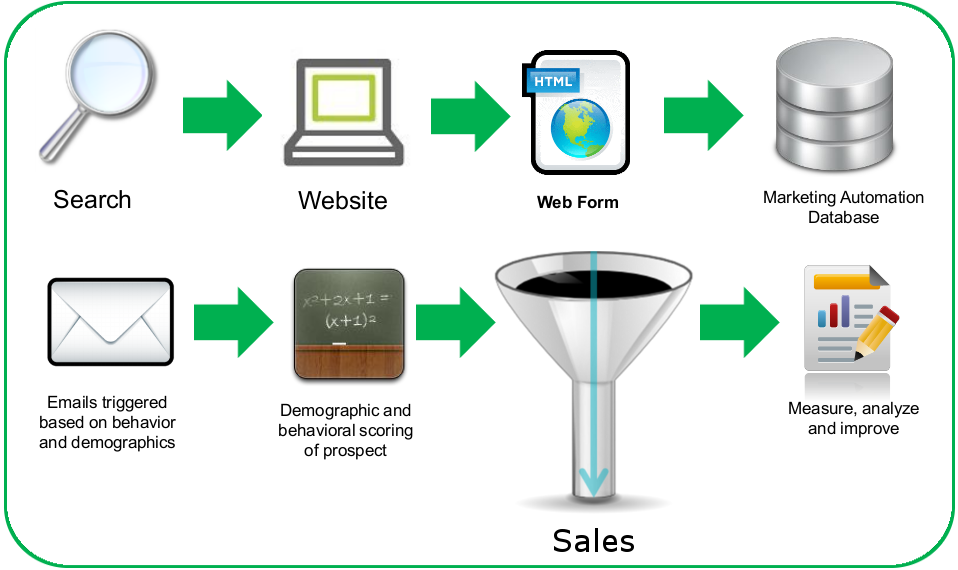
Retargeting is a very powerful digital marketing technique that’s very effective because it focuses on the advertising spent on people who already are familiar with a brand and have recently demonstrated an interest in it. That’s the reason why most marketers get a higher Return of Investment (ROI) with retargeting software more than with any other digital channels.
How does it work?
It’s starts by placing a small piece of code on the website (code or pixel), unnoticeable to to website visitors, that won’t affect the site’s performance.
This code creates a list of people that visit the website by placing anonymous retargeting “cookies” in their browser. This list allows you to display retargeting ads to your potential customers as they visit other sites, Facebook and their email. Retargeting converts window-shoppers into buyers because, in general, 2% of shoppers convert on the first visit to an online store.
When does it work?
Retargeting, even if it’s a powerful branding and conversion optimization tool, it works best if it’s part of a digital strategy.
Retargeting works best with inbound and outbound marketing or demand generation. Strategies involving content marketing, Google AdWords, and targeted display are great for driving traffic, but don’t help with conversion optimization. Instead, retargeting can help increase conversions, but can’t drive people to the website. To be more successful, it’s recommended to use one or more tools to drive traffic to your website and retargeting to get the most out of that traffic.
Retargeting is different than regular display ads
First of all, because you only target the users that have visited your website and already had an experience with your brand. But you can target users that visit a specific part of the website or open it up to your whole site. Normal display media buys tend to target users in the first stages of the buying funnel. With those ad buys you are tasked with introducing yourself, establishing trust, branding effectively, all while going after an action.
How is it measured?
Unlike typical display advertising measurement, retargeting gives credit to both click and view conversions. Click conversions are any conversions that happen as a direct result of someone clicking a retargeting ad they were served.
View conversions would be like assist. They are conversions that are attributed to another channel (on last click attribution tracking) but these conversions were at one point served a retargeting ad.
Tips & Tricks
You should have in mind that:
– Retargeting is a software
– Banners can be more creative, less official – They need to catch a person’s eye and trigger a memory of their last visit. Logos and brand names are still important, but retargeting ads are an opportunity to push your creative messaging. This is a chance to tell a story to a user that will continue to see you and interact with your site.
– Too much retargeting can work against you – seeing the same ad every time, or seeing more than that can have a negative effect. It’s important to set up a certain period.
Trigger based emails as part of retargeting
Are a part of email marketing that makes a huge difference in the email marketing results. They are very important because can make subscribers feel more valuable, more important – by sending a form of a welcome email, a reminder to repurchase the needed product/service, a celebratory email etc.
A successful trigger based email campaign can increase significant results for business:
Audience segmentation – it’s very important the marketers use wisely the collected information.
A trigger based email is a message always related to an up-sell or a cross-sell, so make sure that any special offer or premium deal that the message relays is matched to the subscriber’s interests and known needs.
Avoid bombarding the prospect! It’s very important to establish rules and set limits regarding the frequency limit to make sure you don’t freak out your potential buyer.
Types of trigger based emails :
1. Welcome emails – it’s a proper etiquette and most customers and subscribers expect them.
2. Cross sell or up-sell email – sent to suggest a complimentary product or service, based on customer’s purchases.
3. “We miss you” email – it’s a good way to offer a discount or other promotion.
4. Cart abandonment email trigger- it is sent to customers who leave items in their shopping carts and often include an enticing offer or other motivation for the customer to complete the transaction.
5. Bounce Behavior email trigger – you will reduce your bounce rate and bring back traffic to your website. With retargeting software you’ll show your customers what your most popular products are, and there’s a high probability that they will be interested in these.
6. Browse Behavior email trigger – helps you segment site visitors in order to send more refined retargeting messages. Once that is done, you can develop a strategy according to their place in the sales funnel. If they are at the top, just browsing, a retargeting strategy is very important to increase brand awareness.
7. Product of Interest email trigger – considerably increases the chances of acquisition and helps you gain a client for life, as they realize they can rely on you to help them get to the bottom of their problem.
8. Dynamic Subscription email trigger – your clients will buy more, because you show them that you care about them from the very beginning, that you want to help them by providing personalized recommendations and that you’ll be better than the other shops they ever engaged with.
9. Black Friday email trigger – used to build anticipation before the Black Friday period. Also, triggered emails are very useful when it comes to shopping cart abandonment because it reminds the potential buyers to place the orders.





